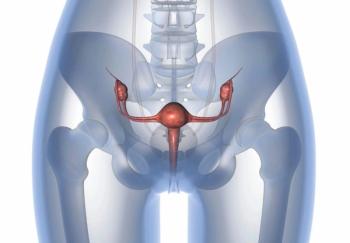
Oncology NEWS International
- Oncology NEWS International Vol 11 No 1
- Volume 11
- Issue 1
Three Types of Genetic Modification Under Study as Means to Improve Cancer Treatment
NEW YORK--Three types of genetic modification--chemosensitization of cancer cells, suppression of oncogene function, and chemoprotection of hematopoietic cells--are under study as a means of improving cancer treatment, Albert Deisseroth, MD, PhD, said at the 15th International Bayer Pharma Press Seminar.
NEW YORK--Three types of genetic modification--chemosensitization ofcancer cells, suppression of oncogene function, and chemoprotection ofhematopoietic cells--are under study as a means of improving cancer treatment,Albert Deisseroth, MD, PhD, said at the 15th International Bayer PharmaPress Seminar.
Dr. Deisseroth, professor of medicine, Yale University School of Medicine,said that adenoviral vectors that specifically infect the target breastcancer cells have been used in preclinical studies to introduce the cytosinedeaminase gene into breast cancer cells.
The adenovirus only enters breast cancer cells that have surface proteinsnecessary for the virus to enter the cell. Once inside the cell, the virusproduces proteins (cytosine deaminase) to convert the prodrug 5-fluorocytosine(5-FC) to the toxic drug 5-fluorouracil (5-FU). When a breast cancer cellis exposed to this virus, 70% of the prodrug is converted to 5-FU.
When hematopoietic cells containing MCS7 breast cancer cells were mixedwith the virus, 100% of breast cancer cells were killed at concentrationsof the prodrug that were not toxic to hematopoietic cells, he said.
Slowing Cancer Cell Growth
Other research is aimed at designing genetic modification proceduresthat can reprogram cancer cells into less aggressive phenotypes. "Oncogenestransmit their signals within the cell through contact with other proteins,"Dr. Deisseroth said. "We identified two small peptides that, whenoverexpressed in chronic myelogenous leukemia cells, suppress growth factor."
The researchers introduced such inhibitory molecules of the transformingprotein into leukemia cells to test if their presence would reduce growthin cultures. Growth decreased as the ratio of inhibitory molecule was increased,he said. The next step is to see if virus vectors can deliver these inhibitorypeptides to leukemia cells in a mouse model, he said.
Chemoprotection via MDR Genes
Dr. Deisseroth also reported studies of genetic modification designedto reduce the myelotoxicity of chemotherapy. For example, in animal studies,the administration of paclitaxel (Taxol) caused the white cell count todrop to zero in control mice.
In mice in which the hematopoietic cells had been exposed to retroviralvectors containing the multidrug-resistance (MDR-1) gene and returned tothe mice, the first exposure to chemotherapy produced a dramatic reductionin the sensitivity of the hematopoietic cells to chemotherapy. After subsequentexposures, there was total resistance to the chemotherapy.
The technique is now being studied in humans. In one trial, the MDR-1gene was introduced into the normal hematopoietic cells of patients withadvanced breast and ovarian cancer. The trial demonstrated that retroviralvectors can be used for this purpose and that it is possible to engraftsuch cells into patients after intensive systemic therapy.
"We also found that genetic modification did not damage the abilityof the hematopoietic cells to repopulate, indicating no damage to normalcells. Furthermore, evidence of the genetically modified cells were foundafter transplant," he said.
In a future trial, the researchers will study patients with breast cancerwhose clinical features predict that they will relapse after surgical resectionand that the relapsed cells will be resistant to conventional-dose therapy.
Before intensive chemotherapy, bone marrow cells will be collected,modified genetically to confer resistance to chemotherapy, and returnedto the patients, who will then receive rapidly escalating doses of paclitaxel."This technique will allow us to avoid the risk and toxicity generatedby intensive chemotherapy," he said.
Articles in this issue
almost 24 years ago
ODAC Sends Mixed Message on New Gliadel Wafer Indicationalmost 24 years ago
ONCC Certification Test Results Are Announcedalmost 24 years ago
Rituximab Ups Survival in Aggressive and Indolent NHLalmost 24 years ago
Topotecan Used in Aggressive Front-Line Therapy for SCLCalmost 24 years ago
Depsipeptide Shows Activity in T-Cell Lymphomaalmost 24 years ago
FDG-PET Useful in Newly Diagnosed and Recurrent NSCLCalmost 24 years ago
Adjuvant Anastrozole Superior to Tamoxifen in Huge ATAC Breast Cancer Trialalmost 24 years ago
ODAC Backs Adding HER-2 DNA Test to Herceptin Package Insertalmost 24 years ago
FDA and VA Plan Joint AIDS Studyalmost 24 years ago
Breast Conservation Increases With On-Site Radiation UnitNewsletter
Stay up to date on recent advances in the multidisciplinary approach to cancer.





















































































